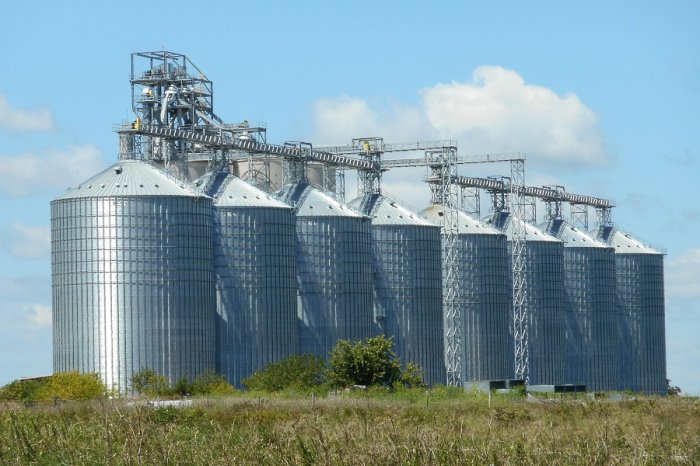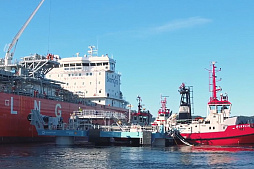After receiving the necessary documents and project presentation, our team will try to review your request as soon as possible, and leading experts will offer the best options for project funding.
For example, the cost of solid waste disposal in sanitary landfills starts from 10-15 euros per ton, while the cost of waste incineration in modern incinerators can reach 1000-1250 euros per ton.
Environmentally friendly technologies that require expensive equipment are currently considered the most expensive for governments, municipalities and businesses.
Large waste incinerators, which convert residual waste into energy (WtE) after sorting and recovery, provide the most sustainable solution to the problem of municipal waste accumulation in developed countries.
This can be a valuable solution for the sustainable development of large cities, but globally, less than 20% of municipal waste is incinerated for energy production.
Recycling and WtE technologies can be both alternative solutions and complementary solutions that make up a single chain of waste management processes. On the one hand, incineration of municipal solid waste simultaneously reduces landfill space and provides consumers with electricity and heat.
On the other hand, sequential recycling, composting of the organic fraction and disposal of residual waste in landfills are much cheaper. The final investment decision depends on the amount of waste, customer requirements, regulatory restrictions, financial capacity of funders and other factors.
As for the potential profit of waste incinerators, modern cogeneration technologies can generate up to 650 kWh of electricity from each ton of MSW, in addition to heat production at the level of about 1000-1100 kWh per ton.
Thermal energy produced by incinerators can be used for both district heating and industrial purposes.
Electrical energy is supplied to residential and industrial consumers, and is also fed into the national grid under long-term PPAs.
Innovative technologies used in waste processing require huge financial resources in the early stages of project development. Projects of this kind usually take 25-30 years or more to satisfy the interests of all participants.
The high cost and long payback period of waste processing plants and WtE projects require a favorable regulatory environment and require long-term support from governments and municipalities.
Project finance (PF), long-term concessional loans, leasing instruments, subsidies, tax incentives and other financial mechanisms are used in this context.
ESFS Investment Group has brought together a multidisciplinary team of financial experts with rich international experience who are ready to offer long-term financial solutions for the construction of waste incinerators and waste processing plants. We offer advanced financial and consulting services in the EU, North America, Latin America, the Middle East, North Africa, South East Asia, India and other parts of the world. Please contact our team for details.
How much does it cost to build a waste incinerator?
The cost of building waste incinerators and waste recycling plants and may be unbearable for customers, which requires the involvement of public funds, support from municipalities and the use of syndicated lending tools to rationally distribute participation and risks among interested financial institutions.Typically, the cost of such projects at the initial stage is estimated at tens and hundreds of millions of euros. For example, large incinerators in Copenhagen (Denmark) and Detroit (USA) cost customers about half a billion euros each. The installation of modern pollution control equipment in the largest incinerators costs an additional 100-200 million euros and even more, depending on the technologies used and customer requirements.
The average cost of building waste incinerators in the European Union, Great Britain, Canada and the USA varies from 600 to 1000 euros per ton per year of installed capacity.
Capital expenditures for the construction of similar facilities in China start at 250 euros per annual tonne. In general, the cost of incinerators in developing countries rarely exceeds 400-500 euros per annual tonne, partly due to less stringent environmental regulations and more affordable labor.

Capital costs for the construction of waste incinerators consist of the following:
• The cost of engineering services.
• Preparation of financial and other documentation of the project.
• Obtaining licenses and permits, contracting costs.
• Purchase or long-term lease of a land plot for an incinerator.
• Selection and purchase of equipment and building materials.
• General construction works and installation of equipment.
• Testing and commissioning of the facility.
• Additional costs associated with financing.
It is convenient to compare these costs in euros per megawatt of electricity generated, which makes it easy to select investment projects based on different technologies.
For example, conventional incineration with energy recovery costs about 6-10 million euros per megawatt, while with the introduction of advanced gasification technologies, this figure rises to 8-12 million euros per megawatt. Facilities using pyrolysis technologies can cost from 7 to 11 million euros per MW.
Violations committed in the construction of facilities of this type in most developed countries, including the US, the UK and EU countries, are fraught with astronomical fines.
This imposes serious requirements on the quality of projects and requires the involvement of competent contractors.
This necessarily affects the final cost of construction.
The tight construction schedule also entails additional costs in case of breach of obligations of any of the contractors, which should be reflected in the corresponding agreements and guarantees. An interesting fact: the failure to install the furnaces at the aforementioned waste incinerator in Copenhagen resulted in an additional cost of 13 million euros for a delay of about half a year.
In addition to capital costs during the construction phase, it is important for project owners to take into account operating costs, which, depending on the type of waste and the technologies used, can vary from 15-20 euros per ton (for the simplest waste incineration technologies) to 55-60 euros per ton (for incinerators using advanced equipment).
These costs are an important factor in choosing alternative ways of waste management for both municipalities and industrial enterprises.
Huge capital expenditures from the planning stage to commissioning of the plant are indeed a serious problem today, which requires the search for reliable partners and the development of long-term models. Professional financial engineering, financial modeling, project management and consulting services are in high demand in this industry as well as the affordable sources of capital.
Factors affecting the cost of a waste incinerator
The first thing to consider when planning the construction of a waste incinerator is the composition of the feedstock.Municipal solid waste contains easily combustible substances such as paper, wood and plastic, which determine the amount of heat and electricity that can be generated in a particular facility. In addition, high levels of moisture and organic waste can make it very difficult to burn the feedstock, reducing the economic efficiency of the WtE project.
Finally, the presence of radioactive waste and other hazardous materials may complicate the operation of the facility and require additional investment. It is obvious that each new engineering solution aimed at reducing emissions and protecting the environment makes the investment project more expensive and more difficult. In some cases, building a waste processing plant for recycling valuable materials, followed by minimal landfilling, would be the most profitable solution.
The purchase or long-term lease of a land plot for the construction of a municipal solid waste incinerator has a direct impact on the financial performance of the project. The construction of waste management facilities near large industrial enterprises or municipalities can benefit both parties, which should be taken into account when choosing a construction site.
Also, locating the incinerator next to a sanitary landfill can reduce future operating costs, since transport and disposal of ash will be much cheaper in the long run.
Air pollution control systems are an important component of capital expenditures. APC systems may include various types of filters to capture ash and gases. Equipment for the disposal of toxic substances can cost tens of millions of euros when it comes to large incinerators.
The management and disposal of highly toxic materials such as fly ash is another important topic of discussion when planning investment projects in this area.
Since the mass of fly ash generated after the combustion of MSW can reach 5% of the initial mass of waste, this process can greatly affect operating costs.
Finally, an investment decision should be based on the availability of a particular type of feedstock over a certain period of time. As mentioned above, modern WtE projects are very capital intensive and usually require at least 25 years to pay off and obtain a satisfactory profit. For this reason, the municipality or the company contracting to build the waste incinerator must ensure an uninterrupted flow of waste of the required quality throughout this period.

Therefore, investors should ensure that the waste supplier does not, in the long run, enter into new agreements that change the way waste is recycled or used. This is quite difficult and risky, given the rapid progress in waste management and the constant tightening of environmental legislation.
Contracts should include financial penalties for municipalities (companies) in case of not supplying the incinerator with sufficient waste.
Waste recycling plant construction cost
In the 2010s, the leading countries of Europe continued to tighten legislation regarding the processing of municipal solid waste.In particular, in Germany, a new Packaging Law came into force in 2019, which requires a minimum recycling rate of 50% for plastic, metal and composite packaging. This has already become a powerful impetus for the development of the waste recycling industry, which is becoming more efficient and technically advanced.
In particular, the German companies have built a high-tech waste recycling plant in Gernsheim, which has reached a maximum recycling rate of 53% for municipal solid waste. This was made possible by a rational combination of manual sorting, mechanical methods and sophisticated infrared technology for the identification of several waste fractions.
Such a plant makes it possible to effectively separate 12 types of useful materials from the MSW stream, including iron, aluminum, paper, polyethylene, PET, polystyrene and other polymers.
The construction cost of the aforementioned Meilo waste recycling plant reached 32 million euros in 2018. The installed capacity of the plant at the time of commissioning was 120 thousand tons of light packaging per year, which means 270 euros per annual tonne. The construction of this waste recycling plant used both traditional mechanical equipment such as drums, ballistic separators and packaging presses, as well as more advanced systems, including near-infrared spectrometers, magnetic and eddy current separators.
The cost of building waste recycling plants is expected to rise in the future as these facilities increasingly rely on sophisticated intelligent systems to separate wastes with similar physical properties.
American, Japanese and German factories are already widely using artificial intelligence algorithms to separate similar types of plastic, and the range of their application will only expand.
Obviously, this will increase the capital expenditure associated with automation, hardware and software. On the other hand, the use of AI with a human-like decision-making structure for sorting waste will significantly increase the percentage of recovered materials from the MSW stream. On the scale of one average plant, this means tens and hundreds of additional tons of PE, PET, PS and other valuable products annually.
Factors affecting the cost of a waste recycling plant
Waste recycling plants are specialized facilities used for the separation of waste, resulting in secondary raw materials, mineral and biological fractions and a fuel fraction that can be used to produce alternative fuels (RDF) from waste.The number and type of equipment used at waste sorting facilities and their location depend on the specific technological solutions adopted and the budget of the investment project.
Economies of scale should also be taken into account, as large waste recycling plants can in some cases cost 20-30% less per tonne of waste processed per year compared to small local scale projects.
The most important factor influencing the final cost of building a waste recycling plant is the type and volume of feedstock. Solid municipal waste recycling plants and, for example, C&D recycling plants for mines and quarries are fundamentally different types of facilities. This means different customers, different business models and different engineering decisions that determine the final cost of each particular project.
Having detailed information about the type of waste delivered to the waste recycling plant, it can be equipped with a set of devices and machines that guarantee high speed and efficiency of recovery and processing.
Finally, the type of waste determines the requirements for infrastructure, since transporting several truckloads of recycled plastic per week and hauling several railway wagons of sand and gravel each day require different logistics solutions and different costs. This is not only about tens and hundreds of millions of euros in capital costs during the planning, permitting and construction phase, but also many millions of euros in operating costs over the life of the project.
For example, one of the largest bottle-to-bottle plastic recycling plants in the world recycles up to 2 million PET bottles (12 fl oz) per year, which corresponds to about 60 tons of recycled plastic. The aluminum recycling plant built by Novelis in Germany is designed to process up to 400 thousand metric tons of aluminum scrap annually.
The world's largest glass recycling plant, built by the world famous Pace Glass company, is capable of recycling up to 6-7 million tons of glass per year.
On the other hand, the average C&D recycling plant is designed to process 100-300 tons of solid waste per hour, which corresponds to approximately 1 million tons per year (nearly 100% of this stream is converted into some type of building material).
If we talk about different recycling technologies, then the most advanced solutions are considered the most capital-intensive. Meanwhile, some sophisticated technologies, such as Mura Technology's HydroPRS™, are taking recycling to the next level. In particular, the mentioned technology of hydrothermal plastic recycling, which is planned to be implemented at a new plant in Germany, makes it possible to obtain valuable products from plastic mixtures that were previously considered unrecyclable.
Moreover, the recycled plastics produced are considered clean and safe enough for further contact with food and beverages.
This can eventually justify the multimillion-dollar costs incurred during the construction phase.
Project finance in the construction of waste processing plants
As in the case of the construction of a waste incinerator, as well as in the case of a waste recycling plant and other waste management projects, the role of project finance has increased significantly in recent years.The off-balance sheet nature of financing and the ability to implement several projects at once attracts many companies that take on these capital-intensive environmental initiatives.

An average waste incineration plant with a capacity of 300,000 tons of waste per year costs an average of 200 million euros. In most cases, the main source of funding is a loan, sometimes supplemented by a grant from the government or municipality (or other form of grant funding). Obviously, for young companies, project finance (PF) models are the most convenient solution.
The key principle of project finance is the separation of the investment project from the assets of its sponsors.
This means that the sponsors are liable for project debts incurred during the construction of the recycling plant only to the extent of their participation in the Special Purpose Vehicle (SPV).
When making a decision to finance the construction of a waste processing plant, funders focus on the cash flow of the project, and not on the assets of its owners.
According to the Basel Committee on Banking Supervision (BCBS), project finance is a financing method in which the funder considers project revenues both as the basis for repaying the loan and for securing the loan. More precisely, funders initially consider the facility's cash flows as a source of debt servicing, and the assets of the SPV in this case serve as collateral for the loan.
Separation from the assets of the project sponsors allows for a clearer identification of project risks and the formation of a corresponding financial structure. An incinerator or waste recycling plant project is exposed to a range of risks during both the construction and operation phases.
Project finance implies a rational distribution of risks between sponsors (owners), funders, contractors and other interested parties. For example, construction risks are usually borne by the contractor, while the risk of underfunding the project due to incorrect cost estimates is borne by the project owner.
The following are the purposes of using project finance for environmental projects:
• Minimization of sponsors' obligations for each specific project.
• Rational distribution of risks and responsibilities between project participants.
• Separation of project debt from sponsors' assets through a special purpose vehicle.
• Minimization of the tax burden through the use of advanced financial engineering tools.
• Tax minimization through the use of advanced financial engineering tools.
• Expanding opportunities for financing capital-intensive investment projects.
• Diversification of risks and sources of income in the portfolio of investment projects.
In project finance models applicable to environmental projects, the share of borrowed funds is usually 70-90%. This means that a company can start a project with a minimum own contribution of 10% of the investment cost. In addition, financing terms of up to 20 years correspond to the financial parameters of most projects for the processing of solid waste.
If you are interested in a large loan for the construction of a waste recycling plant or a WtE project, please contact our team.
GCAM Investment Group is ready to develop a customized financial model for your environmental project and provide long-term financing based on advanced PF tools.





















